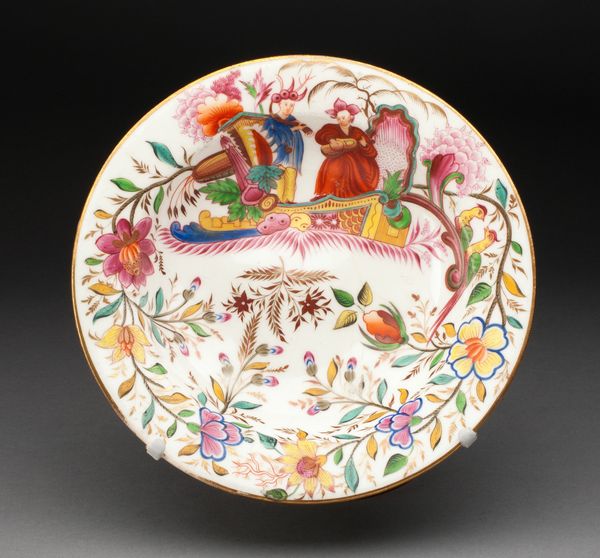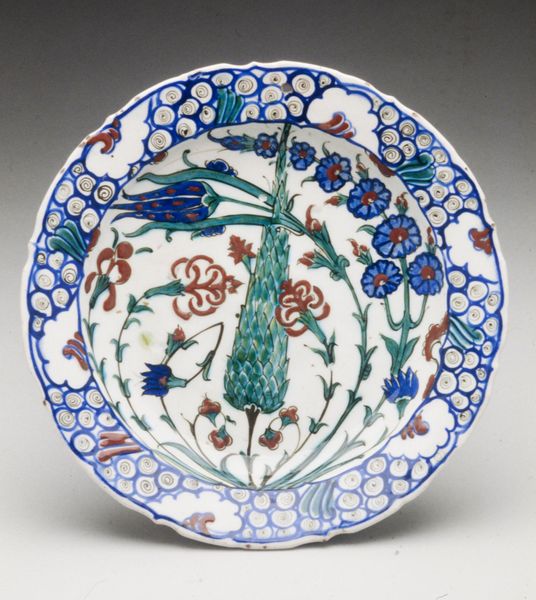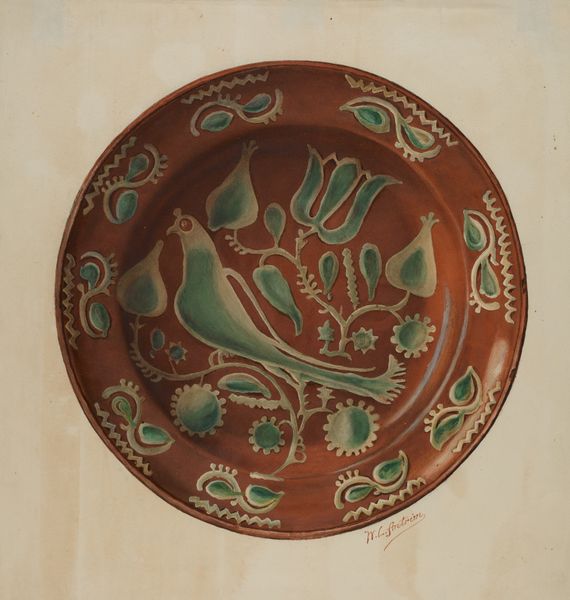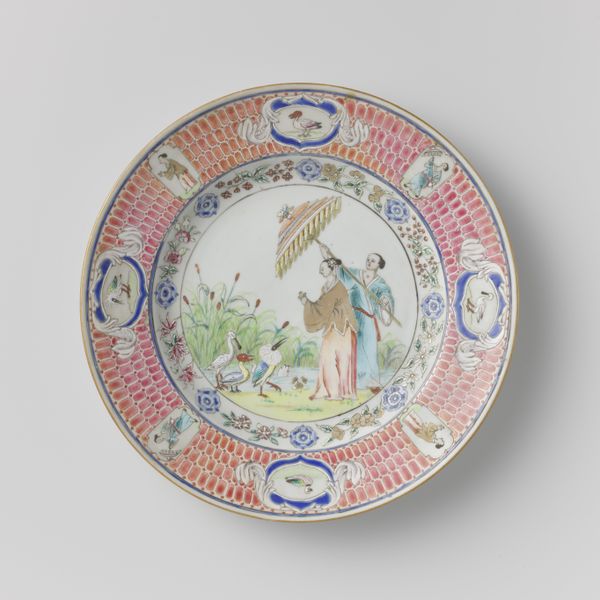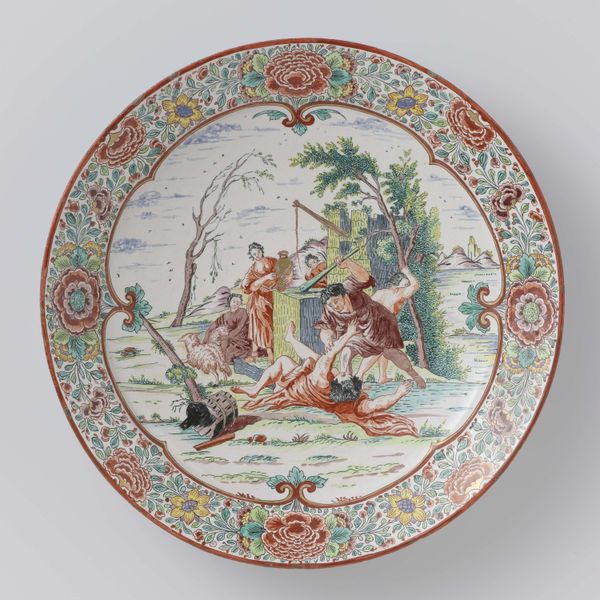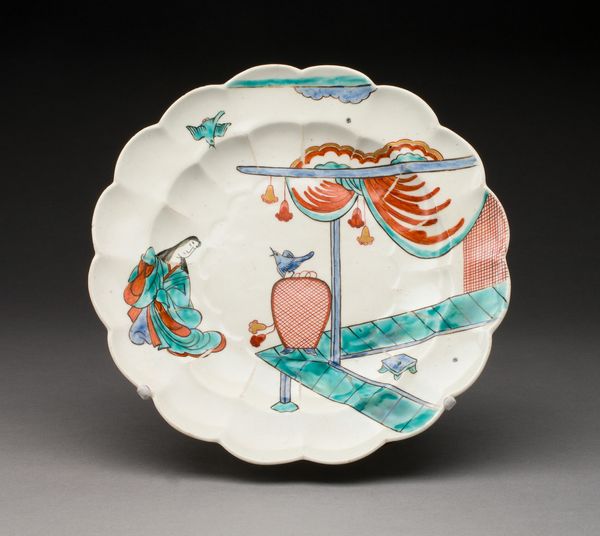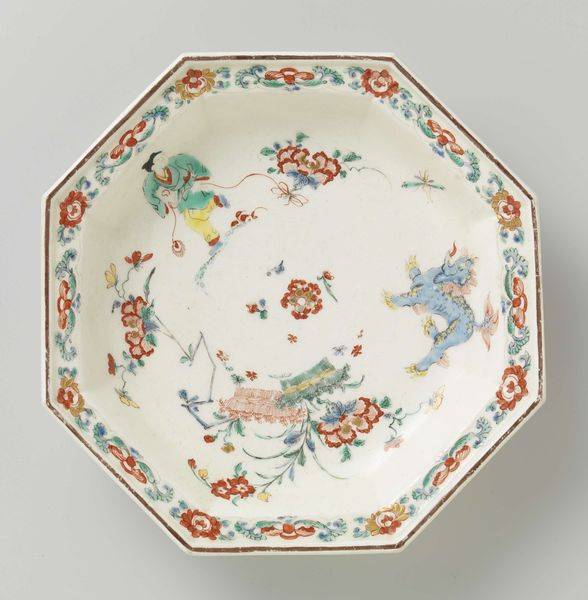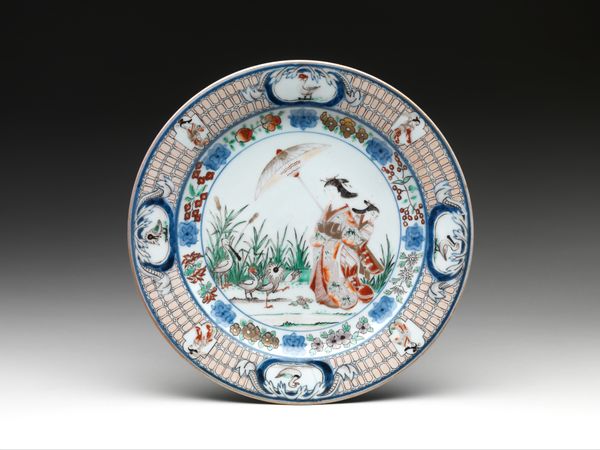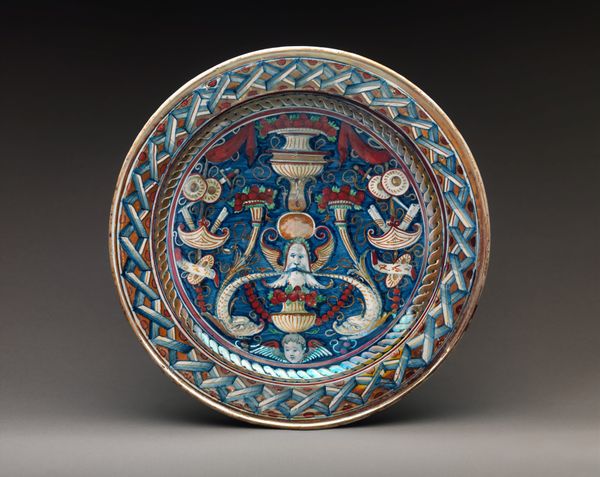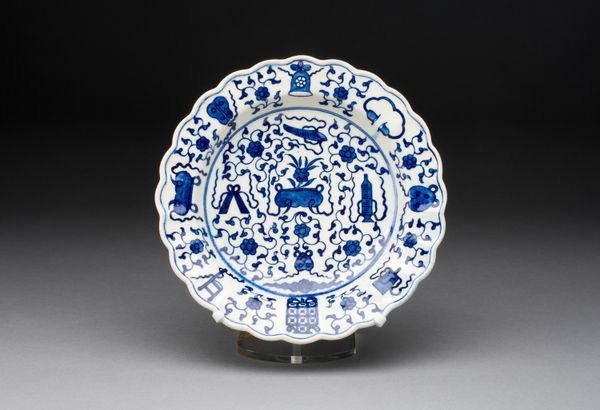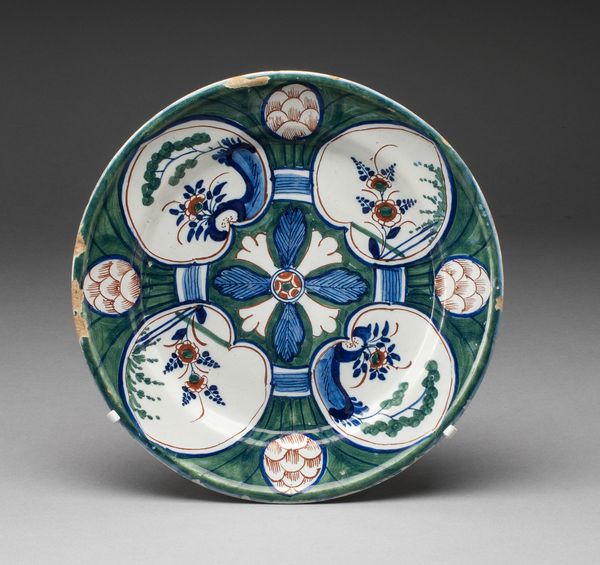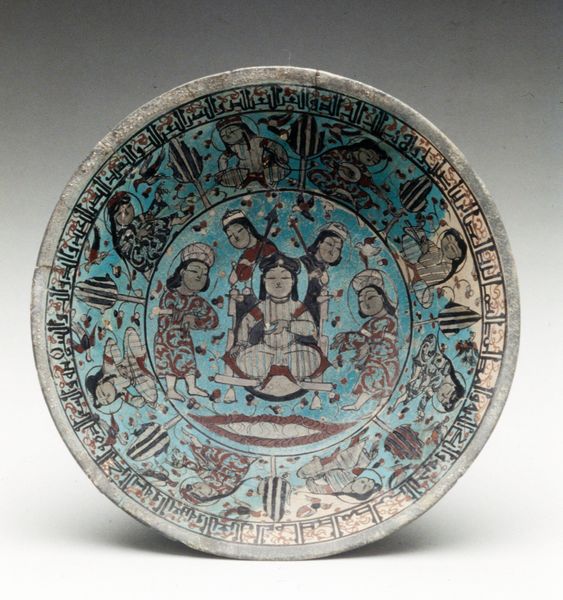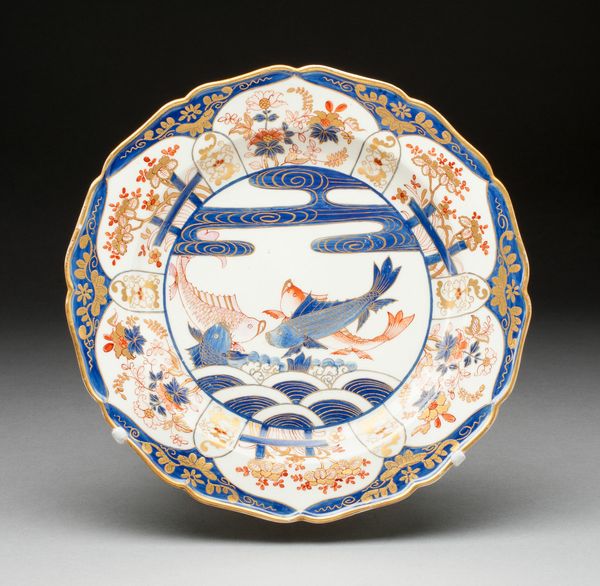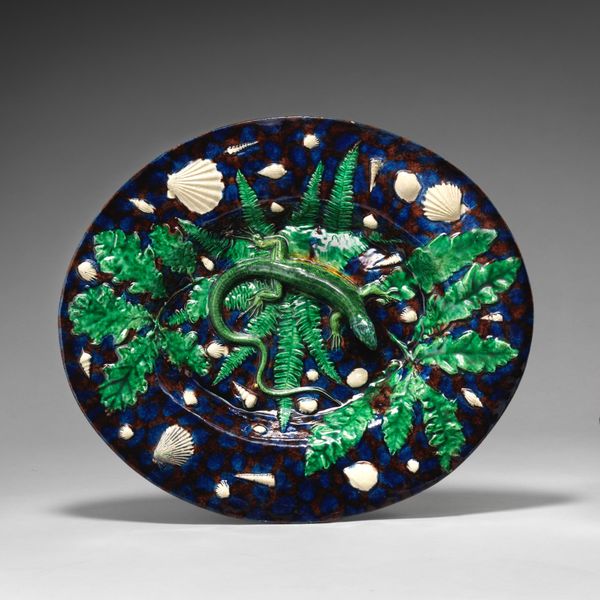
ceramic, sculpture
#
pottery
#
ceramic
#
bird
#
flower
#
sculpture
#
ceramic
#
decorative-art
#
decorative art
#
rococo
Dimensions: H. 1-7/16 in. (3.7 cm); Diam. 10-3/16 in. (25.9 cm)
Copyright: Public Domain
Editor: Here we have a ceramic plate made by the Ansbach Pottery and Porcelain Manufactory between 1725 and 1735. It’s such a charming piece; the bright colors and the little birds create this idyllic, almost whimsical scene. How would you interpret a work like this? Curator: I see this plate as a window into the Rococo period's fascination with the natural world, filtered through a lens of European privilege and appropriation. Notice how the flora and fauna, likely inspired by Asian motifs, are arranged in a way that emphasizes decorativeness over botanical accuracy. What does this stylized representation tell us about Europe's relationship with the rest of the world at the time? Editor: That's a really interesting point! It does seem like the artists were more interested in aesthetics than in accurately depicting nature. Do you think there’s something deeper to read into? Curator: Absolutely. Think about the context: colonialism, trade routes, and the appropriation of artistic styles. These plates weren’t just decorative items; they were symbols of status, power, and global reach. Who had access to these imported aesthetics and who was excluded? How did displaying such objects reinforce existing social hierarchies? Editor: So, it’s not just a pretty plate, but a reflection of broader social dynamics at the time? Curator: Exactly. It prompts us to consider how art and culture are intertwined with issues of identity, class, and global power dynamics. This plate isn’t just Rococo; it’s Rococo within a complex web of historical forces. What are your thoughts now? Editor: It's shifted my perspective completely! I thought it was just beautiful craftsmanship, but now I see the deeper story it tells about cultural exchange and power. Thank you. Curator: It's my pleasure! Art like this calls us to keep interrogating the context.
Comments
No comments
Be the first to comment and join the conversation on the ultimate creative platform.
